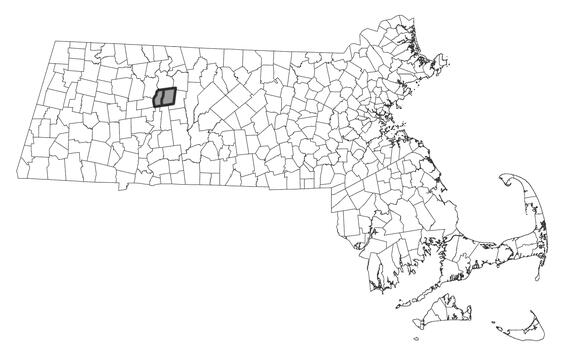- Scientific name: Cystopteris laurentiana (Weatherby) Blasdell
- Species of Greatest Conservation Need (MA State Wildlife Action Plan)
Description
The laurentian bladderfern is a member of the “Cystopteris fragilis” complex; all are closely related species. It has been considered a hybrid in the past, as C. x laurentiana, but is now typically treated as a fertile allopolyploid resulting from a cross between fragile fern (C. fragilis) and bulblet fern (C. bulbifera). Synonyms for this species include Cystopteris fragilis var. laurentiana Weatherby and Cystopteris x laurentiana (Weatherby) Blasdell. This is an upright, tufted fern, with fronds up to 6 dm (23.5 in), including their stipes. This is an upright, tufted fern, with fronds up to 6 dm, including their stipes. The blades are bipinnate pinnatifid, and are ovate to lanceolate, tapering abruptly to their tips. Like bulblet fern, the laurentian bladderfern stipe has glandular hairs, which are dense on all parts of the bulblet fern, but sparse on laurentian bladderfern. In addition, it rarely has bulbils; when present these are few, misshapen, and abortive.
Life cycle and behavior
This is a perennial fern.
Population status
In Massachusetts, laurentian bladderfern is only known from one location on a moist calcareous cliff. The size of the population is unknown. Laurentian bladderfern is a species of greatest conservation need and is maintained on the plant watch list. In Massachusetts, laurentian bladderfern is only known from one location on a moist calcareous cliff. The size of the population is unknown
Distribution and abundance
Laurentian bladderfern, a globally rare species, has a disjunct distribution in northeastern North America, and is rare or considered vulnerable in all states and provinces where it occurs. It is critically imperiled in Michigan, Pennsylvania, Vermont and New Brunswick, imperiled in Labrador, Massachusetts, Newfoundland, Nova Scotia, and Wisconsin, vulnerable in Ontario and Quebec and presumed extirpated in Illinois.

Distribution in Massachusetts
1999-2024
Based on records in the Natural Heritage Database
Habitat
Laurentian bladderfern is found on vertical surfaces such as cliffs, ledges, and talus on high pH substrates, including limestone, dolomite and other calcareous and alkaline rocks. Associated herbaceous species observed in Massachusetts include Micranthes virginiensis, Cystopteris fragilis, Cystopteris bulbifera, Aquilegia canadensis, Campanula rotundifolia, Dryopteris marginalis, and Geranium robertianum. Both Tsuga canadensis and Hamamelis virginiana grow over and shade the plants.
Healthy habitats are vital for supporting native wildlife and plants. Explore habitats and learn about conservation and restoration in Massachusetts.
Threats
The primary threats to laurentian bladderfern are not well-defined but may include changes to its primary habitat. This might include loss forests near it to development, changes in the hydrology of its substrate, and, potentially, air pollution.
References
Cobb, B., E. Farnsworth, and C. Lowe. 2005. A Field Guide to Ferns and Their Related Families, Northeastern and Central North America, Second Edition. The Peterson Field Guide Series. Houghton Mifflin Company, Boston and New York.
Gleason, H.A. and A. Cronquist. 1991. Manual of Vascular Plants of Northeastern United States and Adjacent Canada, Second Edition. The New York Botanical Garden, Bronx, New York.
Haines, A. 2011. Flora Novae Angliae. The New England Wild Flower Society. Yale University Press, New Haven, CT.
Haufler, C.H., R.C. Moran, and M.D. Windham. 7. Cystopteris. In Flora of North America Editorial Committee. 1993. Flora of North America, Volume 2, Pteridophytes and Gymnosperms. Page 266. Oxford University Press, New York, New York.
NatureServe. 2025. NatureServe Network Biodiversity Location Data accessed through NatureServe Explorer [web application]. NatureServe, Arlington, Virginia. Available https://explorer.natureserve.org/. Accessed: 5/23/2025.
Contact
| Date published: | April 15, 2025 |
|---|